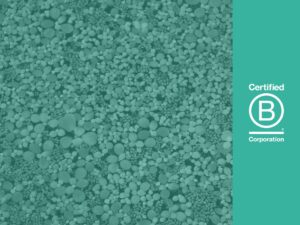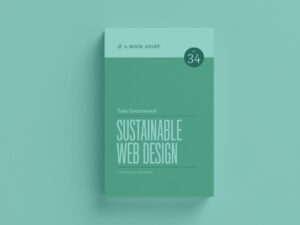
Partnership Development Manager, Marketa Benisek, is a certified Climate Reality Leader and has spent much of this year championing digital sustainability at events such as 24 Hours of Reality. On 18th November, she will once again be taking to the stage, this time as part of London Climate Action Week, which begins on Saturday 14th.
London Climate Action Week is focused on harnessing the power of London – all of the city’s hearts and minds – for global climate action. Because events will be taking place online, you can get involved from wherever you are in the world.
Marketa will be taking part in a webinar on 18th November, 10am-12pm, called ‘The environmental impact of the digital industry’ which will aim to answer the following questions:
- What is the environmental impact?
- Why is it important?
- How to we reduce it?
- Who is already working towards a more sustainable digital future?
Other speakers at this event include Neil Clark – Environment and Service Lead at Manifesto, Asim Hussain – Green Cloud Advocacy Lead at Microsoft, Tom Greenwood – Co-founder and MD at Wholegrain Digital, Sophie Dembinski – Head of Public Policy & UK Country Manager at Ecosia, Paul Johnston – CTO, Director, and Researcher, and Mohan Ghandi – Head of Research & Policy at SDIA.
Marketa will discuss the things a Digital Marketing Manager can do to become more sustainable, and the following blog article, taken from her own blog everydaychoices.life gives a flavour of what you can expect from Marketa next week.
Register for your free ticket to the talk at London Climate Action Week here.
Digital Sustainability
You may be thinking, “digital what?”. Those were exactly my thoughts when I was introduced to the team at Wholegrain Digital, a London-based WordPress agency. When they first explained to me that the Internet has a carbon footprint, I was confused. Then I started testing various sites using their website carbon calculator and I was stunned.
The truth is that the Internet has an enormous carbon footprint and with the ever-increasing number of devices we use for tweeting and binge-watching, it is rapidly growing.
The internet consumes 416.2TWh per year. That’s more than the entire United Kingdom.
It is estimated that the Internet produces about 1 billion tonnes of CO2 emissions every year. That is about 2% of the global greenhouse gases. And if you think that 2% doesn’t sound like a lot, 2% is also the carbon footprint of the global aviation industry, which is often viewed as the bad guy in relation to climate change!
Digital language & data centres
One of the reasons why we don’t think about Internet as harmful to our planet is the language that we use. We use words such as cloud or wireless. They make digital sound so intangible. However, at the heart of everything we do online are very tangible data centres.
One thing we know all too well from our mobile phones is that electronic devices generate heat. To be able to use the internet, we need a lot of energy not only to power all the data centres, but also to cool them down since the servers in data centres can generate up to 60-70° Celsius.
Cisco predicts that nearly two-thirds of the global population will have Internet access by 2023. That’s 5.3 billion Internet users, using on average 3.6 devices per person (29.3 billion devices in total).
Naturally, with the ever-increasing number of internet-connected devices, the carbon footprint of the internet is also expected to rise. It could be as much as 14% of the global emissions by 2040.
The Internet, cloud storage, and data allowance are all really cheap. That means that we don’t mind wasting a few gigabytes here and there. But what doesn’t get mentioned often enough (or at all) is that most of those wasted gigabytes are powered by burning fossil fuels and thus contributing towards climate change.
The good news is that technology and the IT sector have been a driver of innovation and we can all help to make the internet greener by designing our websites with digital sustainability in mind.
How?
Here are 8 tips to get you started:
- Do a site audit – First you need understand the impact of your site before you make any changes. Find out how long it takes to load your site and the individual pages; what’s takes up most space on your site – is there a way to reduce it? At Footprint Digital, we perform Digital Marketing Audits to help people understand where their marketing efforts could improve – this includes a section on sustainability.
- Simplify user interface – do you have any background videos, carousels, or social media embeds? If the answer is yes, ask yourself if you really need them. These features take a lot of space and they don’t necessarily make the UX any better.
- Remove unused code – many websites have features written in code that simply don’t get used and therefore take up space for no reason. Eliminating dead code will reduce the size of your site, which can also help improve your page speed and quality score.
- Improve user experience – If a website is poorly laid out and people are clicking through, trying to find what they were looking for, that’s not only wasting their time, it’s also a waste of energy. Good user experience makes using the web easier and more enjoyable for everyone. From a sustainability point of view, it reduces the amount of energy wasted navigating to pages that don’t serve the correct purpose. To create a great UX, we need to have a good understanding of how people navigate through the website. You can use tools such as Google Analytics to see where your visitors came from, how many pages they visited, how long they spent on your site, and which was the last page they saw before they left the site. All of this can help us improve the site and the UX.
- Reduce size wherever possible– when it comes to a sustainable internet, size really matters. All the data that we need to move around between data centres and our devices take a lot of energy to transfer. Every byte matters. This is especially true for page weights, images, videos, fonts, and various other factors on our sites. We have all the tools to make our sites smaller, so let’s use them.
- Invest in SEO – If people can find your website easily, that means they’ll use less energy (both in their time and electricity) looking for you. That’s why successful SEO is aligned with reducing energy consumption.
- Create great content – Search engines scan the content on our websites. That’s how they can match search queries with the results that best answer users’ questions. But if there’s no content (or no good content), Google wouldn’t know what the website is about so it would not rank it. When you work on your website, always try to make sure that the content is as relevant as it can be and it has all the right keywords that make it easier for your clients to find you or your products or services online.
- Switch to green hosting provider– This is the most significant thing you can to to reduce the carbon emissions of your website. Switching to a green hosting provider is the same logic for you as for a publishing house to print on recycled paper. Best way to find a green host is the The Green Web Foundation. They have the largest directory of green hosts globally.
Being aware of digital sustainability played a big role in deciding how to create my own blog site, Everyday Choices. It would have been so easy to create a site on Wix or SquareSpace but their data centres are powered by dirty energy so it wasn’t an option for me.
I knew that if I wanted to talk about sustainability, let alone digital sustainability, I needed to find a better solution. And indeed, I did find one. I am proud to be able to say that my site is powered by 100% renewable energy.
Yes, it took more time to find the right solution. It also took more time to build it. But all this extra effort was worth it.
To me, sustainability is not about finding the easiest solutions. It’s about finding the right ones. And the right ones should always be the ones that are not harming the planet.
That’s the power of our Everyday Choices.
Everyday, we get to choose which causes we support.
And I will always try my best to support the clean ones. Because that’s how we can create a better future for us and for the generations to follow.
I hope you will join me.
Marketa Benisek.
(since this London Climate Action Week, we have launched a new service, our Digital Carbon Footprint Audit, which can help you to understand your website’s carbon output, and reduce it. Find out more here).





